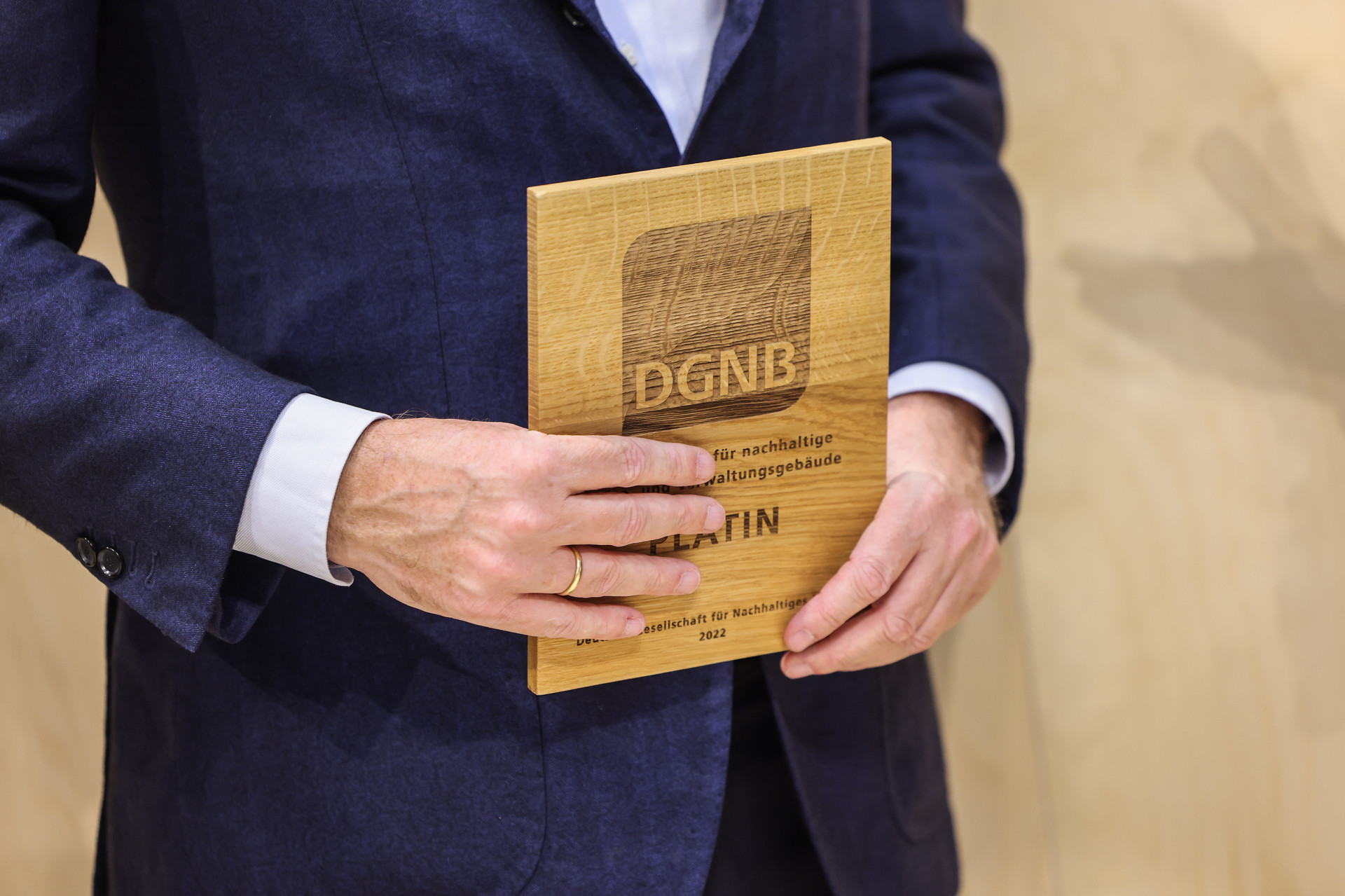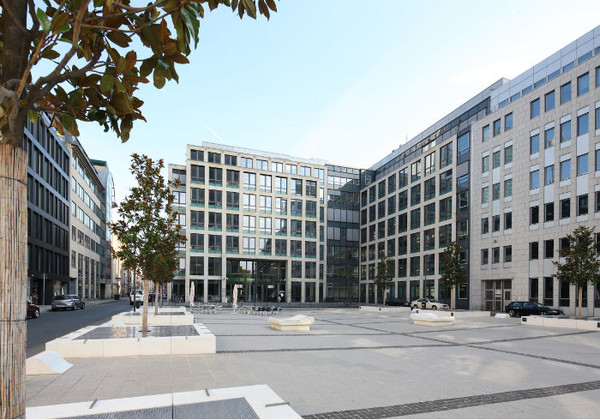For a sustainable, future-proof and economic real estate portfolio, it is necessary to know and optimise the real consumption of a building. This is where the DGNB System for Existing Buildings can be applied: A DGNB Certification of Existing Buildings creates a transparent data basis for sustainable optimisation and innovation strategies. Compared to the certification of newly constructed buildings, the documentation process is significantly simplified. The certificate remains valid for three years, and re-certification is easily achieved.
- Offices and administrative buildings
To the scheme - DGNB Flex
More about DGNB Flex
Certification of existing buildings at a glance
- From a building age of three years
- Simplified documentation through evaluation of the present state
- For the evaluation, the consumption of the last year can be used as a basis instead of an often complex and expensive simulation of the energy demand. A large part of the evaluation can be carried out by means of an inspection.
- Evaluation of the five topic areas of environment, economy, social and functional aspects, technology and process
- A regular review of the status quo makes efficient optimisation possible.
Differences to the certification of new construction
- Significantly reduced scope of criteria (22 criteria)
- Bronze rating level as of 35 percent overall degree of fulfilment
- Straightforward introduction to enable certification even for older buildings
- Evaluation of actual consumption instead of planning data
- In the process, the building operation is evaluated.
- Focus on sustainable building operation
- Regular review of performance to check the optimisation strategy
Benefits
- Holistic approach – the DGNB is the only provider to evaluate the three pillars of sustainability environment, economy and sociocultural with equal weighting
- Performance-oriented – the DGNB does not assess individual measures but the overall performance of a building. As a result, you benefit from the greatest possible freedom, e.g. for innovations
- Life cycle assessment over the entire life of a building
- Independent compliance testing – we test every project one hundred percent independently. In this way, you receive a reliably resilient result.
| Updates of the DGNB Certification for Existing Buildings regarding the current Version 2013 | Omitted criteria in Version 2013 |
|---|---|
|
|
Please note: During the period under consideration, an occupancy rate of at least 50 percent must still be demonstrated.
Evaluation and certification criteria
To ensure that older buildings can also benefit from a DGNB Certificate for Existing Buildings, the following rules apply to the application of the individual schemes:
- In contrast to new construction, existing buildings have to deal with their structure and possibilities for optimisation may be limited. For this reason, there is an additional award level for existing buildings: in addition to the award levels in Silver (from 50 percent), Gold (from 65 percent) and Platinum (from 80 percent), there is also an award in Bronze from 35 percent of the overall fulfilment.
- No differentiation according to building age classes. This makes the evaluation much simpler and a comparison of different buildings more meaningful.
- Achieving the requirements in the lower quality levels of the criteria is always relatively easy to do.
- In many criteria, there are alternative, simplified means of documentation.
For existing buildings, there is currently no DGNB System available in English or for international certification. Please contact us for further information and if interested.
The certificate
A DGNB Pre-Certificate (optional) for Existing Buildings makes it possible to specify estimated values for the criteria that are influenced by e.g. modernisation measures. If all required values are available, a certificate can be applied for immediately. Values already proven in the pre-certificate do not have to be proven again. The pre-certificate is valid for 18 months, the certificate for three years.
Certification requirements
The completion of the building or renovation / modernisation must be at least three years before the submission date of the documents.
- Modernisation measures are generally permitted within a limited scope. A certification according to the criteria for existing buildings is no longer possible if the following modernisation measures have been carried out in the last three years (either 1 or 2):
1) 50 percent of the facade and roof area (energetically effective) + a significant change (generation and distribution) to either ventilation or heating or cooling
2) 25 percent of the facade and roof area (energetically effective) + two significant changes (generation and distribution) to ventilation or heating or cooling - Maintenance measures and minor measures such as moving partition walls, floor covering or painting work do not count as modernisation measures and have no influence on the applicability of this DGNB System.
A detailed description can be found in the general principles of the system.
The scheme with the largest area share of the total DGNB assessment area is referred to as the primary use. If the share of floor space of the secondary use is ≥ 15 percent of the DGNB assessment area, the procedure must be agreed with the DGNB Office via a project-specific request for certifiability (PAZ) in the DGNB System Software by a DGNB Auditor before the project is registered.
Certification is possible as a single certification, ensemble certification and multiple or serial certification. Here you will find the delimitation rules for the classification of project certifiability. Unless otherwise stated in the individual criteria, only the building and the open spaces directly associated with it are considered.
Project registration

To register a project, clients must first hire a DGNB Auditor. This auditor can then register the project. Auditors also accompany the entire process and take over the verification and submission to the DGNB. They are active worldwide and specialise in certain schemes.
Projects can be registered in the current market version "Existing Buildings, Version 2013".
Selected DGNB certified projects

Offices and Administriative Buildings
Your contact
Markus Kelzenberg
Chief Executive Officer DGNB GmbH / Certification Body
- Phone: +49-711-722322-75
- Email: m.kelzenberg@dgnb.de
